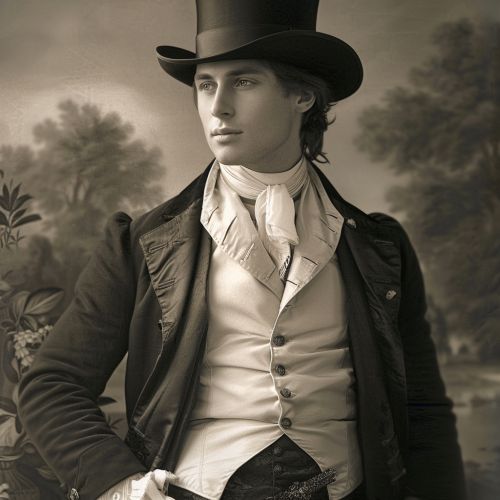Dandyism
Origins of Dandyism


The concept of dandyism originated in the Regency era of England, a time marked by significant cultural and societal shifts. The term 'dandy' was used to describe men who placed particular importance on physical appearance, refined language, and leisurely hobbies. The dandy, in essence, was a man who aimed to distinguish himself through his style and conduct.
Characteristics of Dandyism
Dandyism is not merely about physical appearance but also about a mindset. It involves a certain attitude towards life and society, a form of self-expression and a sense of individuality. A dandy is a man who is meticulous about his grooming, attire, and manners. He is sophisticated, elegant, and exudes an air of nonchalance. He is also known for his wit, charm, and refined tastes in art, literature, and culture.
Influence on Fashion
Dandyism has had a significant impact on men's fashion. The dandy's emphasis on a well-tailored suit, crisp shirt, and carefully chosen accessories has influenced the standards of formal men's attire. The influence of dandyism can be seen in the fashion trends of various periods, including the Victorian and Edwardian eras, and even in contemporary men's fashion.
Dandyism in Literature
Dandyism has been a recurring theme in literature. Many authors have used the character of the dandy as a vehicle to explore themes of identity, class, and society. Notable examples include the works of Oscar Wilde, who himself was considered a dandy, and the character of Jay Gatsby in F. Scott Fitzgerald's The Great Gatsby.
Criticism and Controversy
While dandyism has been admired for its emphasis on aesthetics and refinement, it has also been criticized. Some view it as a form of superficiality, while others see it as a symptom of social decadence. The dandy's preoccupation with appearance and his apparent disregard for more serious matters have been the subject of critique.
Modern Dandyism
In the modern era, dandyism has evolved and adapted to changing societal norms and fashion trends. While the core principles of dandyism remain, the modern dandy can be seen in various forms, from the hipster to the metrosexual. Today, dandyism can be seen as a form of resistance against mass-produced fashion and the homogenization of style.
